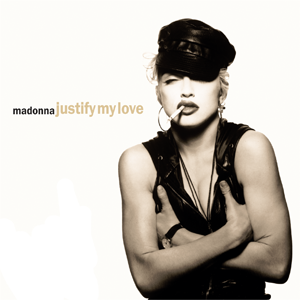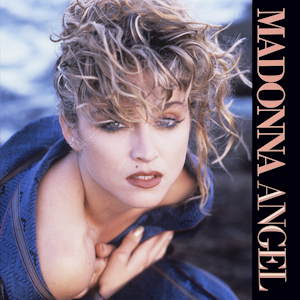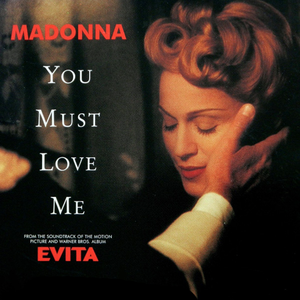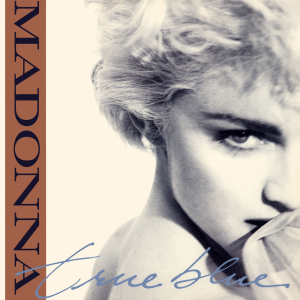
"Justify My Love" is a song by American singer Madonna from her first greatest hits album, The Immaculate Collection (1990). The song was written by Lenny Kravitz and Ingrid Chavez, with additional lyrics by Madonna; Kravitz also handled the production alongside André Betts. It was released as the lead single from the album on November 6, 1990, by Sire and Warner Bros. Records. Chavez was not credited on the song, which led to a lawsuit against Kravitz, eventually reaching an out-of-court settlement. Musically considered as a hip hop, dance, trip hop, and experimental pop track, it features spoken word vocals by Madonna as she releases her inner freak, touching on sexual fantasies and implying the position of a woman as the one sexually in control.

You Can Dance is the first remix album by American singer and songwriter Madonna. It was released on November 17, 1987, by Sire Records. The album contains remixes of tracks from her first three studio albums—Madonna (1983), Like a Virgin (1984) and True Blue (1986)—and a new track, "Spotlight". In the 1980s, remixing was still a new concept. The mixes on You Can Dance exhibited a number of typical mixing techniques. Instrumental passages were lengthened to increase the time for dancing and vocal phrases were repeated and subjected to multiple echoes. The album cover denoted Madonna's continuous fascination with Hispanic culture.

The Immaculate Collection is the first greatest hits album by American singer Madonna, released on November 13, 1990, by Sire Records. It contains fifteen of her hit singles recorded throughout the 1980s, as well as two brand new tracks, "Justify My Love" and "Rescue Me". All the previously released material were reworked through the QSound audio technology, becoming the first ever album to use it. Meanwhile, the new material saw Madonna working with Lenny Kravitz and Shep Pettibone. The album's title is a pun on the Immaculate Conception, a Marian dogma of the Catholic Church.

"Dress You Up" is a song by American singer Madonna from her second studio album, Like a Virgin (1984). It was released as the album's final single on July 24, 1985, by Sire Records. Written by Andrea LaRusso and Peggy Stanziale, and produced by Nile Rodgers, who also played guitar on the track, it was the final song to be added to the album. Rodgers had asked the writers to compose something similar to the work of his band Chic but, due to LaRusso and Stanziale being busy with other projects, the composition took time. When the lyrics were submitted, the producer initially rejected them, as he felt there was no time to compose a melody; Madonna, however, liked the lyrics and convinced him to include the song on Like a Virgin. Musically, "Dress You Up" is a dance-pop song whose lyrics are an extended metaphor for fashion and lust, comparing dressing up with passion.

"Causing a Commotion" is a song by American singer Madonna from the soundtrack album to the 1987 film Who's That Girl. It was released as the album's second single on August 25, 1987, by Sire Records. Its Silver Screen Single Mix later appeared on the EP The Holiday Collection (1991). Written and produced by Madonna and Stephen Bray, the song was inspired by her relationship with then-husband Sean Penn, and his abusive and violent nature. Containing a dance-oriented, up-tempo groove, the song begins with the chorus and is accompanied by a four-note descending bassline and staccato chords in the verses.

"Crazy for You" is a song recorded by American singer Madonna for the film Vision Quest (1985). It was released on March 2, 1985 by Geffen Records as the lead single from the film's soundtrack album. Film producers Jon Peters and Peter Guber, along with music director Phil Ramone, decided to use Madonna after listening to her previous recordings, employing John Bettis and Jon Lind to write the song. After reading the script of the film, Bettis and Lind wrote the song about the situation in which the lead characters meet at a nightclub. Initial recording sessions did not impress Bettis and Lind, and they felt that "Crazy for You" would be dropped from the soundtrack. However, a new version was recorded to their liking.

"Angel" is a song by American singer Madonna from her second studio album Like a Virgin (1984). It was released on April 10, 1985, by Sire Records as the album's third single. Written by Madonna and Steve Bray, it was one of the first songs developed for the project and, according to Madonna, was inspired by a girl who is saved by an angel, and she falls in love with him. "Angel" was released as a 12-inch single with "Into the Groove" in some countries and charted likewise. A music video was not filmed for "Angel", and instead, a promotional clip comprising segments of her previous videos was released in the United Kingdom.

"Into the Groove" is a song recorded by American singer Madonna, and featured on the 1985 film Desperately Seeking Susan. Written and produced by both Madonna and Stephen Bray, the main inspiration behind the song was the dance floor; the singer wrote it while watching a Latin American man whom she was attracted to. Its instrumentation features synthesizers and drum machines, with Madonna's voice being double tracked on the chorus. Sexual innuendos and undertones are present throughout the lyrics, which are written as an invitation to dance with the singer. Originally written for her friend Mark Kamins, Madonna later decided to use it on the film, as one of the scenes needed a dance song. It was later added to the 1985 international re-issue of her second studio album, Like a Virgin (1984), and remixed for her compilations You Can Dance (1987), The Immaculate Collection (1990), and Finally Enough Love: 50 Number Ones (2022).

"You Must Love Me" is a song recorded by American singer and songwriter Madonna. It was written by Andrew Lloyd Webber and Tim Rice, for the 1996 film adaptation of the musical, Evita, based on the life of Argentinian leader Eva Perón. The song was released on October 21, 1996, by Warner Bros. as the lead single from the film's soundtrack. After years of not working together due to their individual projects, Lloyd Webber and Rice collaborated on creating a new track for the film, with the hopes of obtaining an Academy Award nomination for Best Original Song. According to Lloyd Webber, the song's purpose was to showcase Perón's emotional state at the time as well as her relationship with her husband Juan Perón.

"Secret" is a song by American singer Madonna from her sixth studio album, Bedtime Stories (1994). It was released by Maverick Records on September 26, 1994, as the lead single from the album. The singer originally recorded the song as a demo with producer Shep Pettibone. However, Dallas Austin replaced Pettibone's role as the producer and reworked its composition, earning him a writing credit alongside Madonna. It was a departure from Madonna's previous musical style, since up to that point in her career, her music had mostly consisted of big-sounding dance tracks and melodic ballads. "Secret" combined the pop and R&B genres with instrumentation from an acoustic guitar, drums and strings, while lyrically talking about a lover having a secret.

"Open Your Heart" is a song recorded by American singer-songwriter Madonna for her third studio album True Blue (1986). Written by Gardner Cole and Peter Rafelson, it was conceived as a rock and roll song titled "Follow Your Heart" for singer Cyndi Lauper, but Cole and Rafaelson never had the chance to play it for her. At the time, Cole's management was working with Madonna's, who were looking for material for her third studio album. After her manager asked Cole to present a female demo of the song, Madonna accepted it and, alongside producer Patrick Leonard, turned it into a dance song. Lyrically, it's an innuendo-laden love song where the singer expresses her sexual desire. In the United States, the song was released as the fourth single from True Blue on November 12, 1986; overseas, it was released on December 1. Furthermore, it was included in the compilation albums, The Immaculate Collection (1990), Celebration (2009), and the "video version" was featured on the 2023 remix-themed compilation, Finally Enough Love: 50 Number Ones.

"True Blue" is a song by American singer Madonna from her third studio album of the same name (1986), released as the third single on September 10, 1986, by Sire Records. Written and produced by Madonna and Steve Bray, the song deals with Madonna's feelings for her then-husband Sean Penn. A dance-pop song, it features instrumentation from a rhythm guitar, a synthesizer, keyboards, and drums. The main chorus is backed by an alternate one, incorporating a chord progression generally found in doo-wop music.

"Bye Bye Baby" is a song recorded by American singer and songwriter Madonna, for her fifth studio album Erotica (1992). It was released on November 15, 1993, as the sixth and final single from the album only outside the US. "Bye Bye Baby" was written by Madonna, Shep Pettibone, and Anthony Shimkin and was produced by Madonna and Pettibone. The song is inspired by Madonna's emotions of that time and her S&M thoughts. Musically, it is a hip hop song, sampling a hook from LL Cool J's track "Jingling Baby", released in 1990. Madonna's vocals were filtered to make them appear as sound coming out from an answering machine. "Bye Bye Baby" features instrumentation from keyboard and lyrically finds Madonna asking questions to a lover she is about to abandon.

"Cherish" is a song by American singer Madonna from her fourth studio album, Like a Prayer (1989). It was written and produced by Madonna and Patrick Leonard, and was released by Sire Records as the album's third single on August 1, 1989. "Cherish" was built around the themes of love and relationships, with William Shakespeare's Romeo and Juliet being one of the major inspirations. The track also included a line from "Cherish" by the 1960s band the Association. Musically constructed as a doo-wop-style pop song, it is regarded as a light-hearted track by critics and includes instruments such as a drum machine, percussions, keyboards and a saxophone. Lyrically, it speaks of Madonna's devotion to her lover, and her promise to be always by his side. "Cherish" was included on Madonna's greatest hits compilations The Immaculate Collection (1990) and Celebration (2009).

"Deeper and Deeper" is a song by American singer Madonna from her fifth studio album, Erotica (1992). It was written and produced by both Madonna and Shep Pettibone, with additional writing from Anthony Shimkin. In Australia and most European countries, the song was released as the album's second single on November 17, 1992; in the United States, a release was issued on December 8. It was included on Madonna's second greatest hits compilation, GHV2 (2001). A dance-pop and deep house song, it has disco and Philadelphia soul influences; the bridge features instrumentation from flamenco guitars and castanets, and features background vocals from the singer's collaborators Donna De Lory and Niki Haris. Lyrically, the song talks about sexual desire, though it has been argued that it is actually about a young man coming to terms with his homosexuality, and includes a reference to Madonna's single "Vogue" (1990).

"Rain" is a song by American singer Madonna from her fifth studio album, Erotica (1992). Written and produced by Madonna and Shep Pettibone, in Australia and most European countries, the song was released as the album's fifth single on July 17, 1993; in the United States, a release was issued on August 5. A pop ballad that mixes elements of R&B, trip-hop, and new-age music, its lyrics liken water and rainfall to the power of love.

"Gambler" is a song by American singer Madonna from the soundtrack album to the 1985 film Vision Quest. The song was written solely by Madonna, while the production was handled by John "Jellybean" Benitez at her request. It was released as the second single from the film's soundtrack album on October 3, 1985, by Geffen Records. "Gambler" was never released as a single in the United States, at the request of Madonna's own Sire Records. The music video of the song is an excerpt from the film.

"This Used to Be My Playground" is a song recorded by American singer Madonna. It is the theme for the film A League of Their Own, which starred Madonna, and portrayed a fictionalized account of the real-life All-American Girls Professional Baseball League. Madonna was asked to record a song for the film's soundtrack. At that time she was busy recording her fifth studio album, Erotica, with producer Shep Pettibone. They worked on some ideas and came up with "This Used to Be My Playground" in two days. Once presented to director Penny Marshall's team, the song was released as a standalone single on June 16, 1992, by Warner Bros. Records. However, it was not available on the film's soundtrack due to contractual obligations and was later added to the Olympics-inspired Barcelona Gold compilation album, released that summer. The song was included on Madonna's 1995 ballads compilation Something to Remember.

"Keep It Together" is a song by American singer Madonna from her fourth studio album, Like a Prayer (1989). It was released as the fifth and final single from the album in the United States, Canada and Japan on January 30, 1990, by Sire Records. Written and produced by Madonna and Stephen Bray, the main inspiration behind "Keep It Together" was Madonna's relationship with her family—whom she dearly missed during her divorce from Sean Penn. The song was dedicated to the American band Sly and the Family Stone. The lyrics deal with the realization of how important Madonna's family has been to her life. A pop, funk and deep funk song consisting of an upbeat rhythm and groove, "Keep It Together" features instrumentation from percussion, banjo and a conga.

"Each Time You Break My Heart" is a song recorded by British singer Nick Kamen, for his eponymous debut studio album (1987). It was released by Sire Records on 2 November 1986 as his debut single in 7-inch and 12-inch maxi formats. Kamen had gained popularity by starring in a 1985 Levi's television commercial, later deciding to delve into the music business and signed a record deal with Sire. "Each Time You Break My Heart" was the lead single from his album, written and produced by Madonna and Stephen Bray. It was originally set to be included on Madonna's third studio album, True Blue (1986), but failed to make the final tracklist. Madonna also provided background vocals on the track.






















